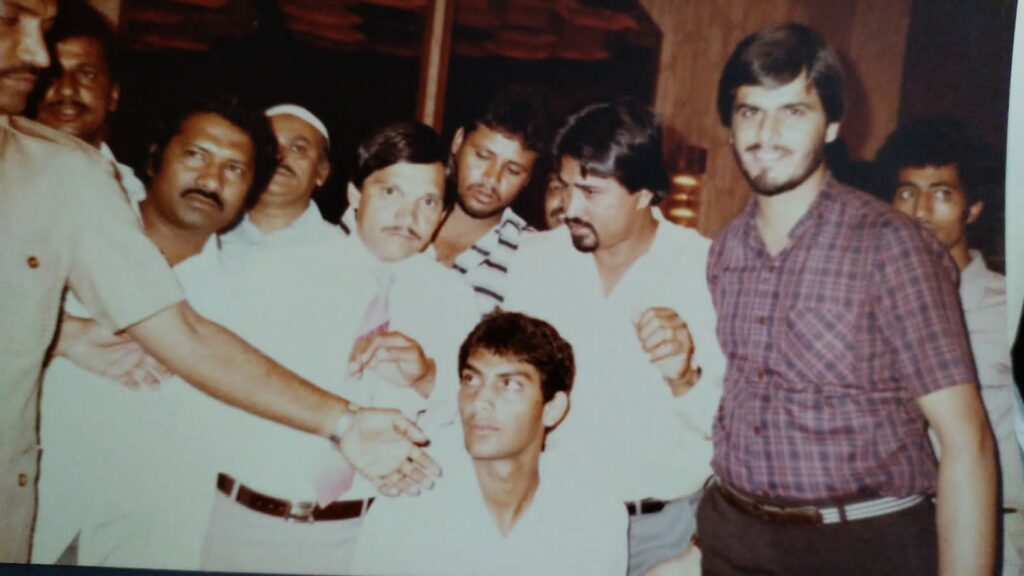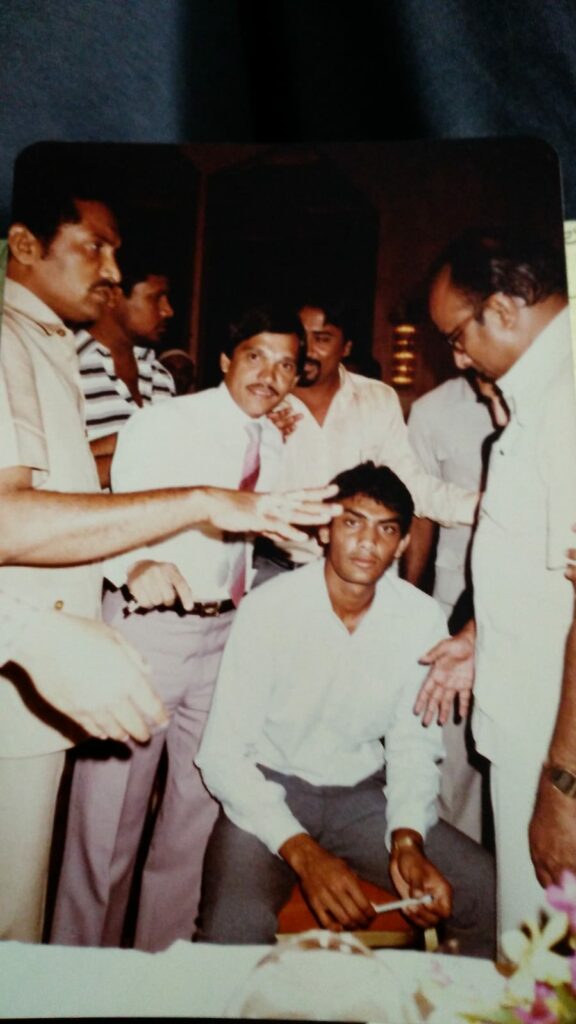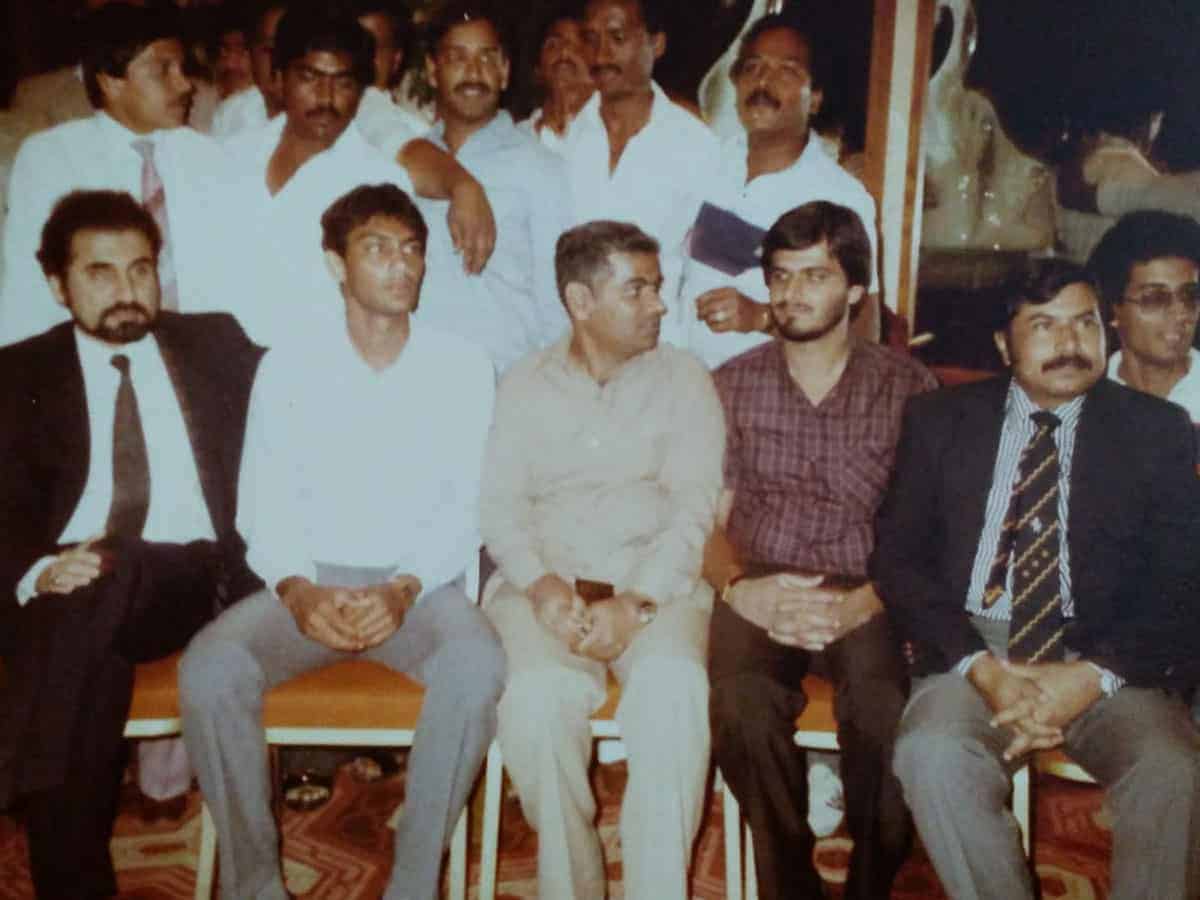
A couple of days back happen to see Mohammed Azharuddin, the once golden boy of cricket at a Valima (Islamic ritual marking consummation of marriage) dinner at the Le Palais Royal in Secunderabad. Was amazed at the reckoning the fallen hero of the game still commands that very few of his peers do.
It was after a good long gap of about 37 years, that I was seeing him in healthy flesh. My first close encounter with Azharuddin was in Abu Dhabi in 1984. Fresh from his record debut of three successive centuries in the first international test he played against the visiting England team at Kolkata’s Eden Garden, the second at Chepauk in Chennai, and the third at Green Park Kanpur. The willowy shy hollow-cheeked lad, turned his willow into a magic wand thrashing the English bowlers to set a world record yet to be broken made him rage in the cricketing world, and the Indian expatriates in the Gulf were no exception. Plus, the euphoria over the spectacular 1983 World Cup win by the Indians over the West Indies was still palpable in them.
Azharuddin then was his simple self, an unassuming player of the game groomed by his grandfather(his claim) as he played “gully cricket” in the dusty Vithalwadi lane of Himayat Nagar, where he lived. The Armani, Versace, Jodhpur bundh galas, knitted T-shirts, Rolex, Hublot, Tudor, Piaget and Tissot watches, expensive fancy shades had not yet bugged him. The collars of his plain white shirts were yet to be popped up. The siren Sangeeta Bijlani cause Celebre was nowhere nearby. Spared by the scuttlebutt he was the darling of the Indian media drooling over his all-around brilliance on the field, no warts, and pimples. His fall from the sublime to the ridiculous enkindled by the scandalous affair and much-assailed marriage with model turned B-Grade actress Bijlani ended on the rocks, as did with his first wife Naureen, mother to his two sons, were a much later happening.
Azhar was in the Indian eleven playing 1984-85, Sharjah Rothman Cricket Trophy at Sharjah’s impoverished cricket stadium. Sharjah was the only hub for whatever little international cricket was played in the oil-rich emirate introduced by an Emirati businessman, Abdur Rehman Bukhatir, , who learned the game while schooling in Pakistan. Cricket also got the much-needed moolah for his other businesses in the red.

It was a trend among the Indian expatriate-run clubs and associations in the UAE headed by rich Indian businessmen to felicitate visiting film artists and sports persons by inviting them to their clubs and presenting costly but sponsored gifts gold chains, watches, electronics, and at times cash.
The Abu Dhabi Indian Association I was a member of, not to be left behind had invited the Indian eleven captained by Kapil Dev to Abu Dhabi the capital of United Arab Emirates from Sharjah a distance of about 140 Km. As news spread that the Indian Team would be visiting Abu Dhabi, the ex-pat Hyderabadi community, the largest in the UAE became restive and wanted to piggybank and accord a welcome of their own to Azhar. Apart from my professional work, I was also President of the Hyderabad Association of Abu Dhabi, not a big deal just the run of the mill unregistered groups common to all ethnic Indians working and living in the Gulf countries.

One of Azhars’ uncles (late)Abid Zainul Abideen working in Dubai was known to me from college days in Hyderabad through him the word was sent to Azhar about his hometown fans’ plan to honor him. Word came back that the captain had to be informed and that instead of gifting a wristwatch, cash would be preferable. An amount of Dhs 5000/(Irs 40,000) a handsome amount for the young cricketer who had no deep pockets was raised. Space was booked at the Sheraton Hotel, conveniently nearby the Indian Association premises. By virtue of my membership, I managed a place near the stage to whisk away Azhar to the restlessly waiting lot at the Sheraton next door, but not before a brief encounter with Kapil Dev requesting him to release Azhar for a short while. I was introduced to Kapil by Azhar as his uncle a commonly used term of establishing a fleeting relation even with strangers and the unknown. The Haryanawi lad, robust and tall but mild and humble in manners to my surprise obliged in a soft voice, ‘yes sir, you may, but please see that he is safely delivered safely to the team’s lodging in Dubai.’ Captains are concerned for their players.
Having got hold of him, the two of us along with a few boys waiting for outside hurried back on foot to Sheraton not to be late, wheels were avoided. Once in the hotel Azhar was not given a moment of his, every and each one who contributed wanted full return of their money wanted to be photographed with him. And a simpleton not yet intoxicated with success, he obliged everyone present.
Azharuddin, as time went by played and played to become the most successful ever captain of the Indian cricket team in 1989 succeeding Srikanth. Only M.S. Dhoni surpassed his record of winning 90 ODIs. He captained 47 test teams. A legend, and was said and rightly, that Azharuddin after Charminar, Biryani, and Bagharey Baigan was the fourth icon of Hyderabad. Tourists visiting Hyderabad would, especially young and budding cricketers would make it must to Azhar’s Banjara Hills bungalow. But somewhere, he lost the plot, and the marbles, perhaps lost to the glitz and glamour of Bollywood, had he given ear to Bhai’s advice and stayed away from MS Bijlani, it could have been a different story

